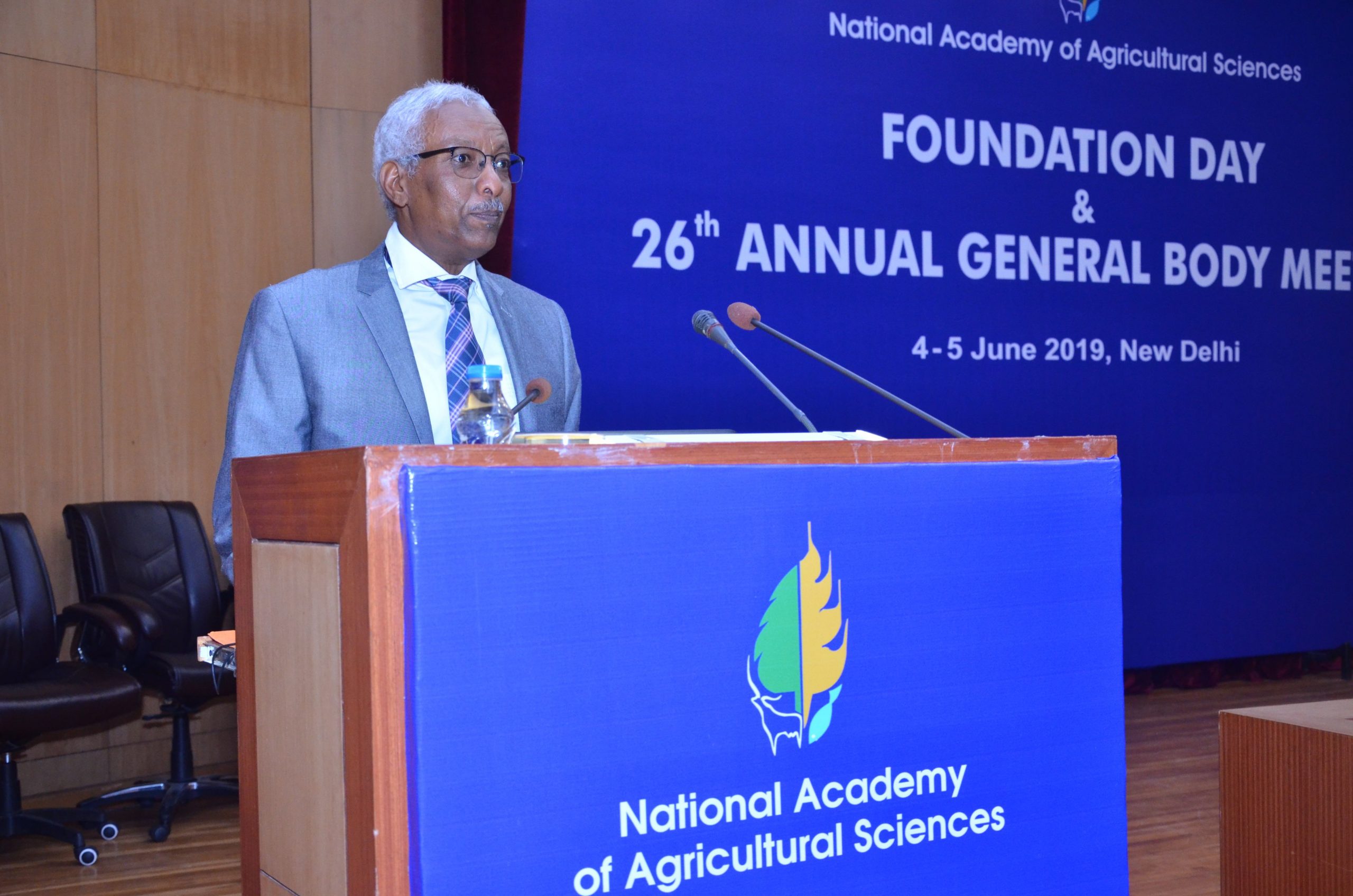Abdel Ismail: Is small-scale farming changing for the better?

By Abdelbagi M. Ismail
The final blog in a four-part series highlights the reflections of Abdelbagi Ismail, Principal Scientist and Regional Representative at International Rice Research Institute (IRRI), on the UN Sustainable Development Solutions Network, Foresight4Food, IFAD and APRA eDialogue session on the future of small-scale farming in Africa.
In any discussion about the future of small-scale farming in Africa, it’s critical to highlight that in sub-Saharan Africa (SSA), about 33 million farms are small-scale and that this sector supports over 60% of the population. Yet, small-scale farmers are the poorest and most food insecure of all. SSA is also the region at most risk of food insecurity in the world, with the current dependence on food imports, especially cereals, population growth and stagnant agricultural production. However, the opportunities are there for this sector to grow and move forward, simultaneously sustaining productivity, while reducing hunger and poverty. The realisation of this potential in SSA largely depends on the growth of this sector, by improving and sustaining productivity, quality and competitiveness of farm products and access to markets.
Changes in African small-scale farming
Awareness of the potential of smallholder farming in SSA is now growing, as governments and stakeholders start to consider the opportunities for small-scale farms to realistically contribute to food and nutrition security in the region. This also seems to be high on some government agendas, with support for small-scale farming being incorporated into national strategies and policies, and investments being made in infrastructure, roads, irrigation systems, and so on. In addition, there is a growing number of technologies more specific to small-scale farming, which can help transform farming from the current traditional production systems into more modern systems, including small-scale mechanisation and new varieties of seeds. Farmers are also increasingly organised into cooperatives to enhance their bargaining power and secure better prices and access to market information than before. With these advances, as well as appropriate harvest and post-harvest handling and greater accessibility of inputs to smallholder farmers, such as fertilisers, the productivity of this sector could at least double, or even triple, judging by previously observed successes in rice farming, as in Asia.
Drivers of change
So, what is driving these changes? The first driver is the realisation that small-scale farmers have to move from being subsistence to commercial production farms, they have to be market oriented. Also, as urbanisation increases, there is an emerging need to meet the rising demand for food and good market value. The availability of technologies that weren’t previously accessible to smallholder farmers in SSA has also motivated transformation. Lastly, many governments have been prompted to realise the need to depend less on foreign imports and more on local production by fluctuating market prices and food availability in international markets, and by global disasters, such as COVID-19 and weather calamities.
Policy directions for moving forward
How can we move forward, though, to ensure the protection of smallholder farmers and provide incentives for them to increase production? I argue that the answer is policies. It is critical that governments provide assurance against exploitation, facilitate sustainable access to fair input and output markets, price guarantees and provide some sort of insurance against crop failures due to pests, diseases, pandemics and climate change adversities. Policies also need to be in place that speed the delivery of modern interventions, while ensuring capacity to adopt them, improve and sustain the value chains, support private sector engagement and provide direct access to input and output markets. Lastly, with more than 65% of the population in SSA under 25 years, policies that provide incentives for younger generations to engage in agriculture are more crucial than ever.
To learn more about the rest of the eDialogue series, click here
To download a printable PDF version of this blog, click here
Cover photo credit: Indian National Academy of Agricultural Sciences (NAAS)
Please note: During this time of uncertainty caused by the COVID19 pandemic, as for many at this time, some of our APRA work may well be affected but we aim to continue to post regular blogs and news updates on agricultural policy and research.
